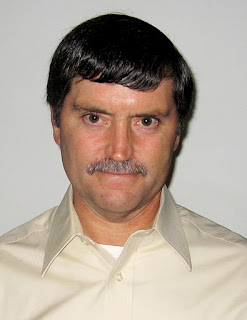
U.S. Senator Chris Murphy
Senator Christopher S. Murphy is the junior United States Senator for Connecticut. Elected in 2012, Murphy serves on the Appropriations Committee, the Health, Education, Labor, and Pensions (HELP) Committee, and the Foreign Relations Committee.
Prior to his election to the U.S. Senate, Murphy served Connecticut’s Fifth Congressional District for three terms in the U.S. House of Representatives. The Fifth District includes the towns of Danbury, Meriden, New Britain, Torrington, and Waterbury. During his three terms, Murphy served on the Foreign Affairs Committee, the Committee on Oversight and Government Reform, the Energy and Commerce Committee, and the Committee on Financial Services.
Before his service in the U.S. Congress, Murphy served for eight years in the Connecticut General Assembly. He spent four years representing Southington and the 81st district in the House, and then spent four years representing the 16th Senatorial District, which includes the towns of Waterbury, Wolcott, Cheshire and Southington. While in the Senate, he served as the Chairman of the Public Health Committee.
Senator Murphy grew up in Wethersfield, Connecticut, and attended Williams College in Massachusetts. In 2002, he graduated from UConn Law School in Hartford, Connecticut. He practiced real estate and banking law from 2002-2006 with the firm of Ruben, Johnson & Morgan in Hartford.
On August 18, 2007, Murphy married Cathy Holahan, an attorney. They have two sons named Owen and Rider.

Congressman Jim Himes
Congressman Jim Himes represents Connecticut’s 4th District in the United States House of Representatives where he is serving his fourth term. He is a member of both the House Committee on Financial Services and the House Permanent Select Committee on Intelligence.
Jim grew up as the child of a single working mom in a small town. As a member of Congress, Jim works hard to provide all American children the same opportunities he had to succeed: access to a first-rate public school, affordable and effective health care, a decent and safe home, and a supportive community.
Born in Lima, Peru in 1966 to American parents, he spent the early years of his childhood in Peru and Colombia while his father worked for the Ford Foundation and UNICEF. As an American abroad, Jim grew up fluent in both Spanish and English and was raised with an awareness of the unique position of the United States in the world. At the age of ten, Jim moved with his mother and sisters to the United States.
Jim graduated from Hopewell Valley Central High School and then attended Harvard University. After completing his undergraduate work, Jim earned a Rhodes Scholarship, which enabled him to attend Oxford University in England where he continued his studies of Latin America, including research in El Salvador.
Prior to his service in Congress, Jim ran the New York City branch of The Enterprise Community Partners, a nonprofit dedicated to addressing the unique challenges of urban poverty. Jim’s team led the way in financing the construction of thousands of affordable housing units in the greater New York metropolitan region, often using new green technologies to achieve energy efficiency and reduce utility costs.
Jim’s experience at Enterprise spurred his involvement in politics. Putting his expertise in affordable housing to work, Jim served as a Commissioner of the Greenwich Housing Authority, ultimately chairing the board and leading it through a much-needed program of reforms. Jim went on to become an elected member of his town’s finance board, setting tax and budget policy for Greenwich. Jim has also served as Chair of his local Democratic Town Committee, organizing others in the community to become more active in the political process.
Jim began his professional career at Goldman Sachs & Co. where he worked his way up to Vice President over the course of a 12-year career. There he worked extensively in Latin America and headed the bank’s telecommunications technology group.
Jim lives in Greenwich with his wife Mary and two daughters Emma and Linley.
 Take this opportunity to enjoy the Circle Line Landmark Cruise around Manhattan and see Midtown Manhattan, the Empire State Building, One World Trade Center, Lower Manhattan, Ellis Island, Statue of Liberty, The Battery, Brooklyn Bridge and the United Nations.
Take this opportunity to enjoy the Circle Line Landmark Cruise around Manhattan and see Midtown Manhattan, the Empire State Building, One World Trade Center, Lower Manhattan, Ellis Island, Statue of Liberty, The Battery, Brooklyn Bridge and the United Nations.












